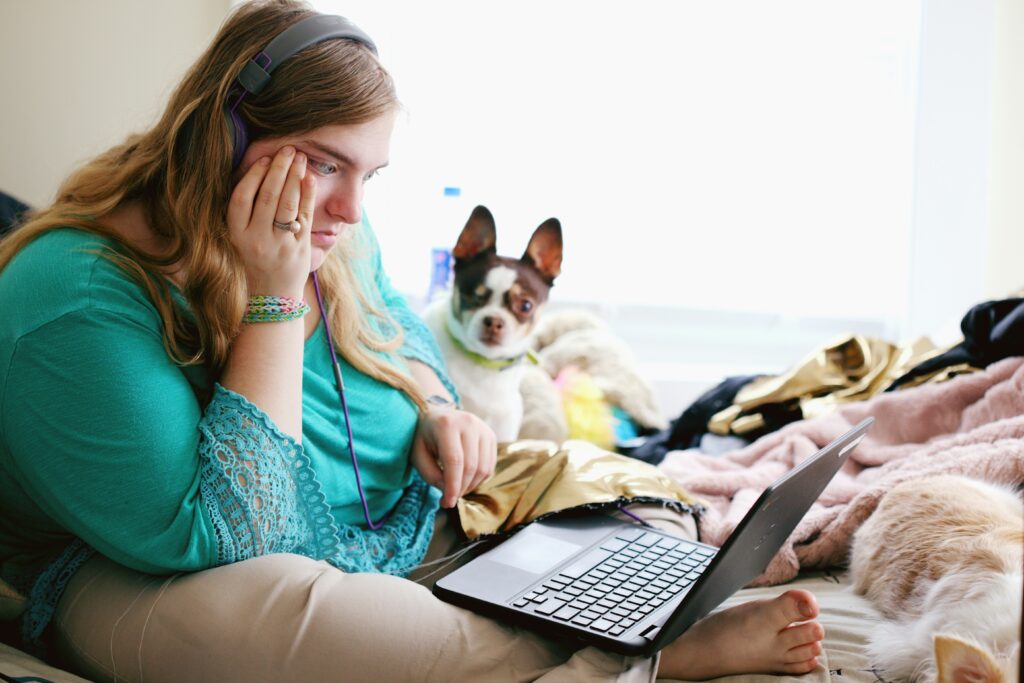
“Your adoption application is so long!”
“Why do you need to do a home visit?”
“Other rescues don’t ask this many questions.”
“You’re making it too hard to adopt a dog.”
As a volunteer for a dog rescue, these complaints come up regularly. The pressure to streamline adoption processes is real—from frustrated applicants, from critics on social media, from well-meaning supporters who just want to see dogs leave the shelter quickly.
But here’s what those critics don’t see: the returned dogs, the heartbroken families, the preventable tragedies that happen when rescues prioritize speed over thoroughness.
The Real Cost of “Easy” Adoptions
Working in rescue means witnessing firsthand what happens when vetting is skipped to speed up adoptions. Everyone pays the price:
The dog experiences the trauma of another failed placement, develops new behavioral problems from the stress, and becomes harder to place successfully with each return.
The family feels guilt and failure, sometimes faces dangerous situations they weren’t prepared for, and may never adopt again because of the traumatic experience.
The rescue deals with the emotional toll on staff and volunteers like myself, spends resources managing preventable crises, and damages its reputation when placements fail publicly.
Future adopters face even stricter processes as rescues overcorrect after bad experiences, and dogs with similar profiles get passed over because of one bad match.
What Thorough Vetting Actually Protects
Physical Safety
Some matches aren’t just unsuccessful—they’re dangerous. A large, strong dog with barrier frustration placed in a home with small children and no fencing. A dog with resource guarding tendencies going to a family with toddlers who don’t yet understand boundaries. A dog with a high prey drive placed with a family who has pet rabbits.
These aren’t hypothetical scenarios. As volunteers, we see them happen regularly when rescues prioritize speed over safety. Thorough vetting identifies these mismatches before they become tragedies.
Emotional Wellbeing
A dog with severe separation anxiety placed with a family who works full-time outside the home will suffer daily. A high-energy working breed going to elderly adopters who can’t provide adequate exercise will become frustrated and destructive. A shy, sensitive dog entering a chaotic household with young children will live in constant stress.
These dogs aren’t “bad fits”—they’re living in environments that prevent them from ever feeling secure or happy. No amount of good intentions compensates for fundamental incompatibility.
Financial Stability
Adopters deserve to know what they’re taking on financially. A dog with ongoing medical needs requires adopters who can afford long-term veterinary care. A dog with behavioral challenges may need professional training support. A large breed puppy will have significantly higher food and healthcare costs than a small adult dog.
When rescues aren’t transparent about these realities, families face impossible financial decisions down the road—often resulting in the dog being returned or, worse, neglected. Those of us in rescue see these heartbreaking situations unfold, knowing they could have been prevented with better upfront communication.
Long-Term Success
The goal isn’t just to get dogs out of the shelter—it’s to get them into homes where they’ll thrive for their entire lives. A successful adoption means the dog never enters the rescue system again. That only happens when the match is right from the start.
What Good Vetting Looks Like
Understanding the Adopter’s Real Life
It’s not enough to know someone “wants a dog.” Good vetting explores:
- What does their typical day actually look like?
- What experience do they have with dogs, particularly dogs with challenges?
- What are their realistic expectations for exercise, training, and behavioral management?
- How will they handle common challenges like house training accidents, destructive chewing, or initial adjustment period struggles?
- What support systems do they have in place?
- What would cause them to return the dog?
These questions aren’t invasive—they’re necessary to understand whether someone is prepared for the specific dog they’re interested in.
Matching Lifestyle to Dog Needs
A working professional who loves hiking on weekends might be perfect for a high-energy dog who can settle during the workday. That same person would be a terrible match for a dog with severe separation anxiety.
A retired couple with all day at home might be ideal for that anxious dog but completely wrong for a young, energetic breed that needs intense physical activity.
Good vetting identifies these nuances rather than applying one-size-fits-all criteria.
Honest Conversations About Challenges
Every dog has challenges, especially rescue dogs. Thorough vetting includes honest discussions about:
- What the adjustment period really looks like
- What behavioral challenges might emerge and how to address them
- What resources are available for support
- What constitutes a solvable problem versus a fundamental incompatibility
Adopters who are prepared for realistic challenges are far more likely to work through them than those who were led to believe adoption would be seamless.
Assessing Problem-Solving Approach
How adopters respond to hypothetical challenges tells rescues a lot about how they’ll handle real ones:
“What would you do if the dog had accidents in the house for the first month?”
“How would you handle it if the dog showed fear around your children?”
“What if the dog destroyed furniture while adjusting to being left alone?”
Answers reveal whether someone views challenges as problems to solve collaboratively or dealbreakers requiring return.
Addressing Common Objections
“You’re Being Too Picky”
Being selective isn’t the same as being unreasonable. Rescues that carefully match dogs to appropriate homes have higher success rates and lower return rates. That’s not being picky—that’s being responsible.
Every dog who returns to the shelter takes up resources that could help another dog. Every failed placement makes that dog harder to place successfully. Careful vetting prevents waste and protects the dogs who are counting on us.
“Good Homes Will Go Elsewhere”
Good adopters understand that thorough vetting protects them too. They appreciate rescues that take the time to ensure good matches because they want a successful adoption as much as the rescue does.
Adopters who are genuinely prepared for the responsibilities of dog ownership aren’t deterred by thorough applications—they’re reassured by them.
“Dogs Are Sitting in Shelters Too Long”
A dog who waits an extra month for the right home is better off than a dog who gets adopted quickly into the wrong home, gets returned, develops new behavioral problems from the stress, and becomes difficult to place at all.
Time in a stable shelter environment with proper care is preferable to the trauma of failed placements. As volunteers who spend time with these dogs, we see how much damage a failed adoption does to them. The goal is permanent homes, not quick exits.
“We Need to Compete With Pet Stores and Breeders”
Rescues don’t need to compete by lowering standards. They compete by offering something breeders and pet stores can’t: transparency, support, and dogs whose personalities are fully known.
The adopters who want convenience over compatibility aren’t the adopters who will succeed with rescue dogs anyway. Let them go elsewhere. Focus on the adopters who value the thorough approach.
Building a Sustainable Vetting Process
Efficient Doesn’t Mean Easy
Good vetting can be streamlined without being superficial. Technology helps:
- Online applications that can be completed at the adopter’s convenience
- Video calls for home visits when in-person isn’t practical
- Standardized questions that still allow for nuanced answers
- Clear timelines so adopters know what to expect
Efficiency is about respecting everyone’s time, not about cutting corners on assessment quality.
Transparency at Every Step
Adopters deserve to understand why rescues ask specific questions. Explaining the reasoning behind vetting requirements reduces frustration:
“We ask about your work schedule because some of our dogs need someone home during the day due to separation anxiety, while others are fine being alone. This helps us match you with a dog who fits your lifestyle.”
“We do home visits to look for safety concerns like unsecured pools or gaps in fencing that might be dangerous for certain dogs. It’s about protecting both you and the dog.”
Supporting Success After Adoption
Thorough vetting continues after adoption:
- Check-ins during the adjustment period
- Access to behavior support resources
- Clear communication about when to ask for help
- Creating a culture where adopters feel comfortable reaching out before small problems become big ones
The rescue’s job doesn’t end at adoption—it extends through the critical adjustment period and beyond.
The Ethical Imperative
Every dog that comes into rescue care depends on the humans in charge to make good decisions on their behalf. These dogs can’t advocate for themselves. They can’t say “this home feels wrong” or “I’m not compatible with this family.”
As volunteers, we become their voice and their protection. That responsibility demands thoroughness, even when it’s inconvenient, even when it’s criticized, even when it means dogs wait longer for homes.
When Vetting Reveals Incompatibility
Sometimes thorough vetting reveals that an adopter isn’t right for a specific dog—or isn’t ready for dog ownership at all. These are hard conversations, but they’re necessary ones.
Saying no to a bad match isn’t giving up on the dog or rejecting the adopter—it’s protecting both. It’s redirecting the adopter toward a better match or toward resources that will help them prepare for future dog ownership. It’s giving the dog a chance at a truly successful placement rather than a quick failure.
The Bottom Line
Thorough adopter vetting isn’t about making adoption difficult. It’s about making it successful.
Every question asked, every reference checked, every home visit completed is an investment in a permanent placement. It’s insurance against preventable returns. It’s protection for dogs who have already experienced too much instability and uncertainty.
The criticism will continue. Frustrated applicants will complain on social media. Other organizations with looser standards will move dogs faster. But none of that changes the fundamental truth: careful matching protects everyone involved and creates the lasting placements every rescue dog deserves.
The dogs in our care have already experienced abandonment, instability, or worse. They deserve advocates who will take the time to get it right—even when getting it right takes longer, even when it’s harder, even when it’s unpopular.
As volunteers who dedicate our time to these dogs, we owe them nothing less than our best effort to find them truly compatible homes. That’s not making adoption too difficult. That’s making it responsible.
The author volunteers with a dog rescue organization and is a certified Family Dog Mediator and Good Dog Academy Professional Dog Trainer specializing in rescue dog behavioral assessment and placement support.



Leave a Reply